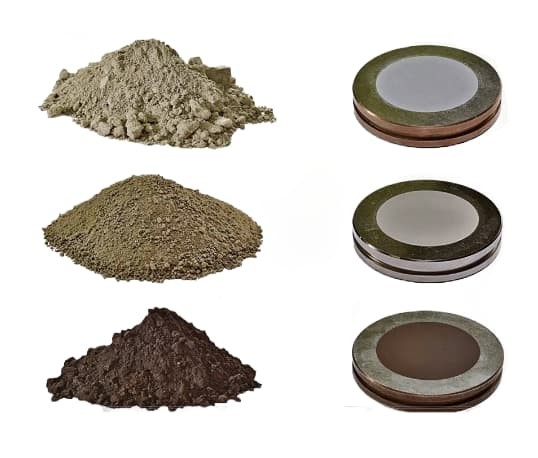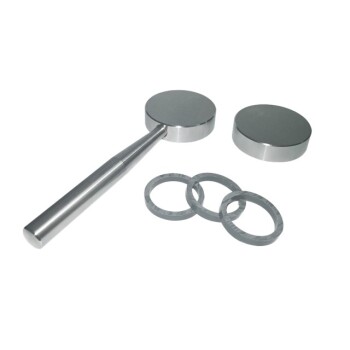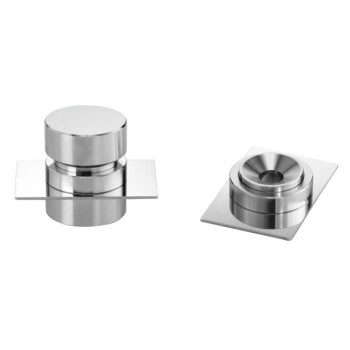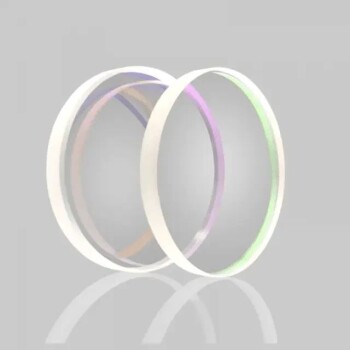XRF(X-ray Fluorescence Spectrometry)
XRF spectroscopy is an analytical technique that is used to identify the elemental composition of a material. XRF works by bombarding a sample with X-rays and measuring the intensity of the resulting fluorescent radiation. The elements in the sample absorb the X-rays and re-emit them at a characteristic energy that is specific to each element. By measuring the intensity of the emitted radiation, it is possible to determine the elemental composition of the sample.
The advantages of XRF analysis are:
- It is a non-destructive technique
- It is rapid and can analyze a wide range of elements
- It can be used on a variety of sample types in different forms
XRF is a versatile technique that can be used for a wide range of applications. It is commonly used for quality control of metal alloys, as well as for the analysis of sulfur in gasoline and heavy metals in plastics and electronics.
XRF can analyze almost any material you can present to the spectrometer, but the better you prepare a sample the more accurate your analytical results. For best results, samples should be ground to a fine powder and pressed into a pellet. XRF is a very sensitive technique, so even small impurities can affect your results.
Sample preparation is a key step in any analytical process, and the choice of preparation method will always be a balance of the quality of results required, the effort you are willing to expend (labor, complexity) and the cost (sample preparation equipment, labor, time to analysis). There are many different methods available for sample preparation, and the best method for any given application will depend on the nature of the sample and the desired results. With modern analytical techniques, even very complex samples can be prepared with relative ease, and the results can be extremely accurate.
How to choose XRF sample preparation method
For example, you may need to use a different method for analyzing a solid metal sample than you would for analyzing an aqueous solution. Your sample preparation method should be chosen to minimize sample loss and contamination while still providing a representative sample for analysis.The XRF sample preparation method that you choose will depend on the material that you are analyzing and the requirements of your analysis. For example, you may need to use a different method for analyzing a solid metal sample than you would for analyzing an aqueous solution. Your sample preparation method should be chosen to minimize sample loss and contamination while still providing a representative sample for analysis.
Most applications will require some form of sample preparation prior to analysis. The selection of an appropriate method depends on a number of factors, including the type of analyte, the sensitivity of the detection method, and the nature of the sample matrix.
Solid Samples
Much like powders, solids can be anything from an unprepared piece of metal to a cut and polished sample. Most solids, however, are in between these two extremes, and have some kind of surface treatment. A solid can be either a pure substance or a mixture of two or more elements or compounds that are held together by molecular attraction.
When measuring the elemental composition of a sample using XRF, it is important to have a sample with a perfectly flat surface. If the surface of the sample is irregular, it can change the distance from the sample to the x-ray source, which introduces error into the measurement. Having a flat surface ensures that the distance between the sample and the x-ray source is constant, which leads to more accurate results.
XRF systems are calibrated based on a fixed sample to source distance. This means that if the distance between the sample and the source is increased, the intensity of the X-rays coming from any element in the sample will decrease. Similarly, if the distance is decreased, the intensity will increase. This is why it is important to keep the sample to source distance constant when taking measurements with an XRF system.
Solid samples such as metal alloys can be analyzed with no sample preparation. This is called non-destructive testing and can be used to determine the composition of the material. Alternatively, the sample can be cut and polished for a more quantitative analysis. This is destructive testing and provides more information about the properties of the material.
Surface finish can refer to the roughness of a surface, but can also refer to the degree of contamination on that surface. If your sample is not flat, surface finish can also affect your analysis by causing elements to be "skewed" or not evenly distributed across the surface. For these reasons, it is important to be aware of surface finish and take measures to ensure that it does not adversely affect your results.
Rough surfaces can cause energy dependent scattering and re-absorption of longer wavelength elements. This can reduce the signal from elements like carbon or sulfur, while not affecting the signal from elements like nickel.
Quantitative analysis of solid samples often requires finishing the surface with a lathe or grinding paper. The finer the finish, the better the results will be for the lightest elements. For example, if you are looking for very small traces of a particular element, you will need to have a very smooth surface in order to get accurate results.
It is important to remember that when calibrating your equipment, you should do so using a range of standards that cover the entire range of what you are testing for. This will help ensure accuracy and precision in your measurements. Additionally, it is important to ensure that the sample preparation you choose is applied consistently to all samples, including calibration standards and unknowns. By taking these precautions, you can be confident in the results of your testing.
Liquids XRF Sample
Liquids XRF Sample are prepared by pouring them into a plastic sample cup in the same way as loose powdered samples.
There are limited options for analyzing liquid samples and the main trick is to choose the correct support film that provides a balance of strength and transmission capabilities and contamination.
Mylar is a good general purpose film often used for the analysis of sulfur in fuels or lubricating oils.
Polypropylene has a better transmission rate than Mylar, but does not have as high of a tensile strength. Kapton is considered the "bomb proof" film, but it dramatically attenuates your signal for lighter elements and is susceptible to strongly basic solutions.
If you are going to analyze liquids, you will need to do a little research into selecting the best support film for your analysis goals. The support film is the foundation of your analysis and it needs to be strong enough to support the weight of the liquid. There are many different types of support films on the market and you need to select the one that is best suited for your needs.
Loose Powders XRF Sample
In order to analyze a sample of loose powder, it is necessary to place the sample into a plastic sample cup with a plastic support film. This ensures that the sample will be supported over the X-ray beam, and that the surface of the sample will be flat. By doing this, X-ray analysis can be performed more accurately.
The more finely ground the sample is, the more likely it is to be homogeneous. Having a homogeneous sample is important for getting accurate results from your analysis. having limited void spaces in your sample also means that your results will be more accurate.
To get accurate XRF readings, it is important to use enough powder so that the X-rays can penetrate fully. This will ensure that readings are not obstructed by anything in the sample. For most materials, 15g of powder should be enough to provide an enough thickness.
When analyzing metal powders in high power WDXRF instruments, it is important to take special care to avoid melting the sample and spilling abrasive powder into the instrument. The sample can heat up during analysis, so it is important to monitor it closely. If the sample does melt, quickly remove it from the instrument to avoid damage.
Pressed XRF Sample Pellets
Pressing powder into pellets is a more rigorous sample preparation than pouring loose powders into a sample cup. However, it is worth the effort because the results are more accurate. The pellets are more uniform in size and shape, which leads to more consistent results. In addition, the pellet press ensures that the powder is evenly distributed, which minimizes the risk of bias.
The process includes grinding a sample into a fine powder, ideally to a grain size of <75um, mixing it with a binding /grinding aid and then pressing the mixture in a die at between 20 and 30T to produce a homogeneous sample pellet.
by weight.A binding or grinding aid is typically a mixture of cellulose wax and is used in a proportion of 20 to 30 percent by weight.
A big advantage of pressed powders is that they provide better analytical results than loose powders. The grinding and compression creates a more homogeneous representation of the sample with no void spaces and little sample dilution. This leads to higher intensities for most elements than loose powders.
If pressed pellets are not ground fine enough, they are still susceptible to particle size effects. The biggest limitation to this approach, however, is the mineralogical effects which most predominantly affect the analysis of major elements.
Pressed pellets are excellent for the analysis of elements in the ppm range. This is because they are very dense, and have few voids or pores. Pressed pellets are also relatively simple and inexpensive to prepare. The only equipment needed is a pulverizing mill and a xrf pellet press.
XRF Fused Beads
Sample prepared as fused beads is often considered the ideal method for preparing solids for XRF analysis because it results in a nearly perfectly homogeneous sample.
Fused beads are created by mixing a finely powdered (<75um) sample with a flux in a flux/sample ratio of 5:1 to 10:1 and then heated to 900C-1000C in a platinum crucible. The sample is dissolved in the flux (usually a lithium tetraborate or tetraborate/metaborate mixture) and cast into a mold with a flat bottom. The resultant glass disc or fused bead is a homogeneous representation of the sample free of mineral structures.
The benefits of the XRF Fused Beads approach are the reduction of mineralogical or matrix effects leading to more accurate analyses. This method also has the ability to combine several different matrix types into the same calibration curve. These benefits allow for a more complete understanding of the composition of a sample. In some cases, the XRF Fused Beads approach can also be used to measure very low concentrations of elements.
The use of Sample prepared as fused beads for XRF analysis has some downsides over traditional sample preparation techniques such as pressed powder pellets. Pelletizing is generally a quicker and simpler process, and can be easily automated. Downsides include the relatively high sample dilution which has a negative effect on the analysis of trace elements and the higher cost associated with this type of sample preparation (fusion equipment, platinum crucibles and consumables).
Fused beads for XRF analysis are typically only 3mm thick. This can cause issues with heavier elements, since they will not be able to be analyzed properly.
XRF fused beads usually require higher initial costs between platinumware and a fusion device, but then have similar cost/sample to prepare as pressed pellets. However, XRF analysis of fused beads can have lower detection limits than pressed pellets because the homogeneity of the bead leads to less matrix effect.
Conclusion
There are many ways to prepare samples for XRF analysis. The method you choose will be a balance of the sample type, the amount of effort you are willing to expend, and the quality of results you require. For example, you can use a simple crushing and grinding method for solid samples, or a liquid-based method for liquid or slurry samples. The choice of method will also affect the time it takes to get results and the cost of the analysis.
If you are looking for a Xrf Pellet Press that can help you complete your task perfectly, our Automatic Lab Xrf Pellet Press is a great option.
Related Products
- Automatic Laboratory Hydraulic Press for XRF & KBR Pellet Press
- XRF & KBR steel ring lab Powder Pellet Pressing Mold for FTIR
- XRD Sample Holder X-ray Diffractometer Powder Slide
- XRF Boric Acid Lab Powder Pellet Pressing Mold for Laboratory Use
- XRF & KBR plastic ring lab Powder Pellet Pressing Mold for FTIR










